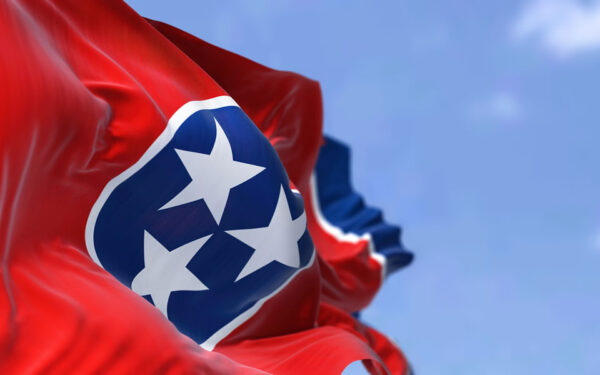Transfer Pricing in Food & Beverage Multinationals
Lessons Learned from Coca-Cola
It was a cola war of a different kind, and Coca-Cola lost against the IRS. In a transfer pricing case against Coca-Cola’s U.S. operations, the U.S. Tax Court sided with the IRS on November 19, 2020, confirming a tax bill to Coca-Cola of more than $3.3 billion. The court supported the IRS’s contention that Coca-Cola failed to prove that it charged the same royalty amount to its affiliated bottlers that it would have charged to its non-affiliated bottlers (that is, it failed to prove that it charged an “arm’s-length” royalty). The IRS reallocated substantial income, originally allocated to foreign manufacturing affiliates, to Coca-Cola. This resulted in an increase in Coca-Cola’s taxable income for tax years 2007-2009 of more than $9 billion and tax deficiency of $3.3 billion.
U.S. Food & Beverage multinationals (“MNEs”) with international expansion aspirations should take particular note of the Coca-Cola transfer pricing case.
Transfer Pricing
Transfer pricing issues can arise where profit is derived by a U.S. MNE due to the transfer of intangible or tangible property, services, or intercompany financing, to related foreign affiliates. The term “transfer pricing” in this context refers to the price at which intangible or tangible property, services, or financing is transferred or made available by an MNE to its foreign affiliate, and how that compares to the price charged in a comparable transfer by or to unrelated parties. The price in this context includes profits and expenses associated with such transfer (“transfer price”).
The transfer price is of particular interest to the IRS and tax authorities worldwide because it may be used to reduce a U.S. MNE’s overall effective global tax rate.
Assume that a U.S. MNE (which is subject to a corporate tax rate of 21%) has developed an intangible property and transfers certain rights to use that property to its foreign affiliate (located in a foreign jurisdiction with a corporate tax rate of 10%). Assume further that the MNE charges a royalty to its foreign affiliate that is much lower than that charged by unrelated parties for similar use of intangible property.
In this example, the MNE charges a royalty of $100 to its foreign affiliate, whereas unrelated parties charge a royalty of $500. The U.S. MNE pays tax of $21 ($100 x 21%), whereas unrelated parties pay a tax of $105 ($500 x 21%). By not charging the “arm’s-length” royalty that is charged by unrelated parties, the MNE is effectively shifting profits from a higher-tax jurisdiction to a lower tax jurisdiction and, therefore, reducing its overall effective global tax. This is not the result the IRS would want for a U.S. MNE.
In Coca-Cola’s case, the company’s trademark and world-renowned secret formulas were made available to Coca-Cola’s foreign affiliates. However, the overall income received by Coca-Cola for the use of the intangible was far smaller when compared to the residual income the foreign affiliates were keeping. The U.S. Tax Court agreed to an IRS adjustment of Coca-Cola’s income by $9.4 billion, which resulted in an increase in Coca-Cola’s tax liability of $3.3 billion.
Why is this reallocation so bad?
- The reallocation of income is made to prior tax years that are under transfer pricing audits. Any reallocation causes tax deficiency in those prior years, subject to penalties and interest, which in the transfer pricing world are quite hefty (up to 40% of the underpayment of tax).
- After a transfer pricing audit, the income originally allocated to the foreign affiliate is reallocated to the U.S. operation of the MNE, subjecting the MNE to additional tax, interest and penalties. Contemporaneously, the foreign affiliate may not be able to amend its tax return in its country of operation, to reduce it taxable income by the same amount and, therefore, its tax liability. This can happen because either the statute of limitation to amend the return has expired or the foreign affiliate’s jurisdiction does not allow amendment due to the IRS adjustment in the U.S. This can result in double taxation of the same item of income.
What can an MNE do?
One cannot prevent an IRS audit no matter the level of diligence exercised, but one can definitely take steps to prepare for a defense against an IRS audit. Developing sound transfer pricing policies, methodologies, and documentation is imperative. As mentioned earlier, in the transfer pricing world, the MNE must be able to show that the price it charges its foreign affiliate in an intercompany transfer is comparable to what unrelated parties in a similar situation with similar facts and circumstances would charge. Additionally, this comparability must be substantiated by maintaining extensive documentation.
Great care should be exercised in finding comparable taxpayers or transactions that more accurately reflect the functional and risk profiles of the foreign affiliate transaction under review. While the Internal Revenue Code provides two sets of methods – the transaction-based method and the profits-based method – to come up with appropriate comparable data, it provides no guidance as to what is considered a good comparable or which of the statutory methods is more appropriate. It is the MNE’s responsibility to justify its choice of method and comparable data. Finally, once developed, the transfer pricing methodology should be reviewed regularly to ascertain its soundness in case of an IRS audit.
According to the IRS, Coca-Cola failed to come up with sound comparable data, inasmuch as it contended that its intangibles were so valuable and unique that there was no “real” comparable data. The IRS and the U.S. Tax Court disagreed and found a set of comparable data among non-affiliated bottlers in assessing tax deficiency. The IRS and Tax Court discarded the method used by Coca-Cola (10% royalty and 50-50 profit split) and reallocated income based on a “comparable profits method.” Furthermore, in developing its transfer pricing policy, Coca-Cola relied on a closing agreement it made with the IRS in 1996. IRS argued (and U.S. Tax Court concurred) that the closing agreement did not apply beyond the years covered, 1987 to 1995.
Lessons Learned
The Coca-Cola case demonstrates the extreme importance for an F&B MNE to pay attention to transfer pricing issues. These issues include not only the particulars of the Coca-Cola decision, but also, for example:
- Learning about and evaluating the types of transactions that may cause transfer pricing issues;
- Reviewing the products, services, tangible or intangible properties, and intercompany financing subject to intercompany transfers;
- The functions of each foreign affiliate and the risks assigned to each; and
- Identifying across the MNE and its foreign affiliates who develops intangible property or who produces goods using that intangible property, and who has ultimate control over the technology, etc.
It goes without saying that Coca-Cola has already appealed U.S. Tax Court’s decision. However, given innumerable nuances and potential for pitfalls, and IRS’s razor focus on MNE transfer pricing, it is highly advisable that an MNE engage the services of a professional well-versed in issues related to worldwide transfer pricing matters.



























